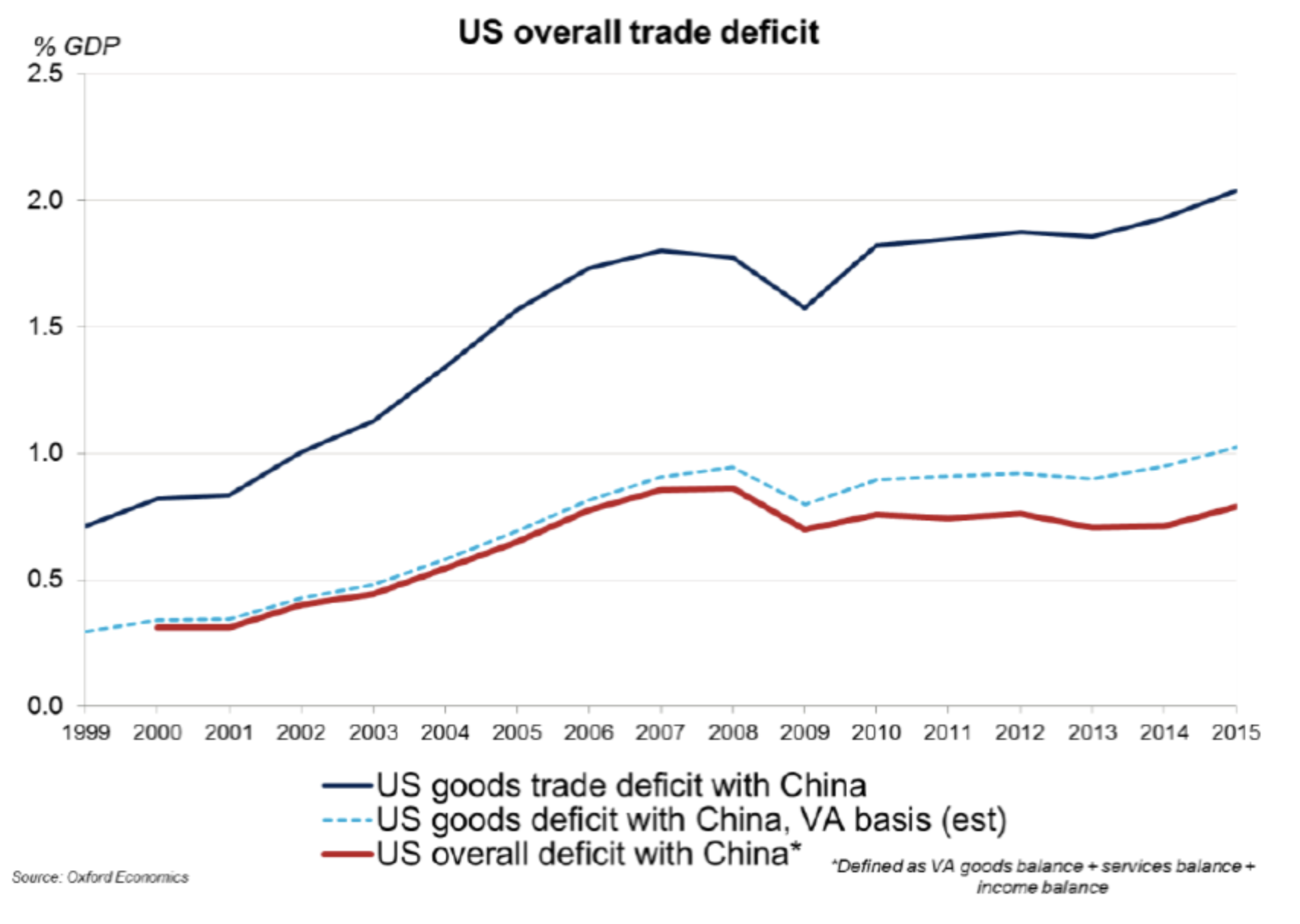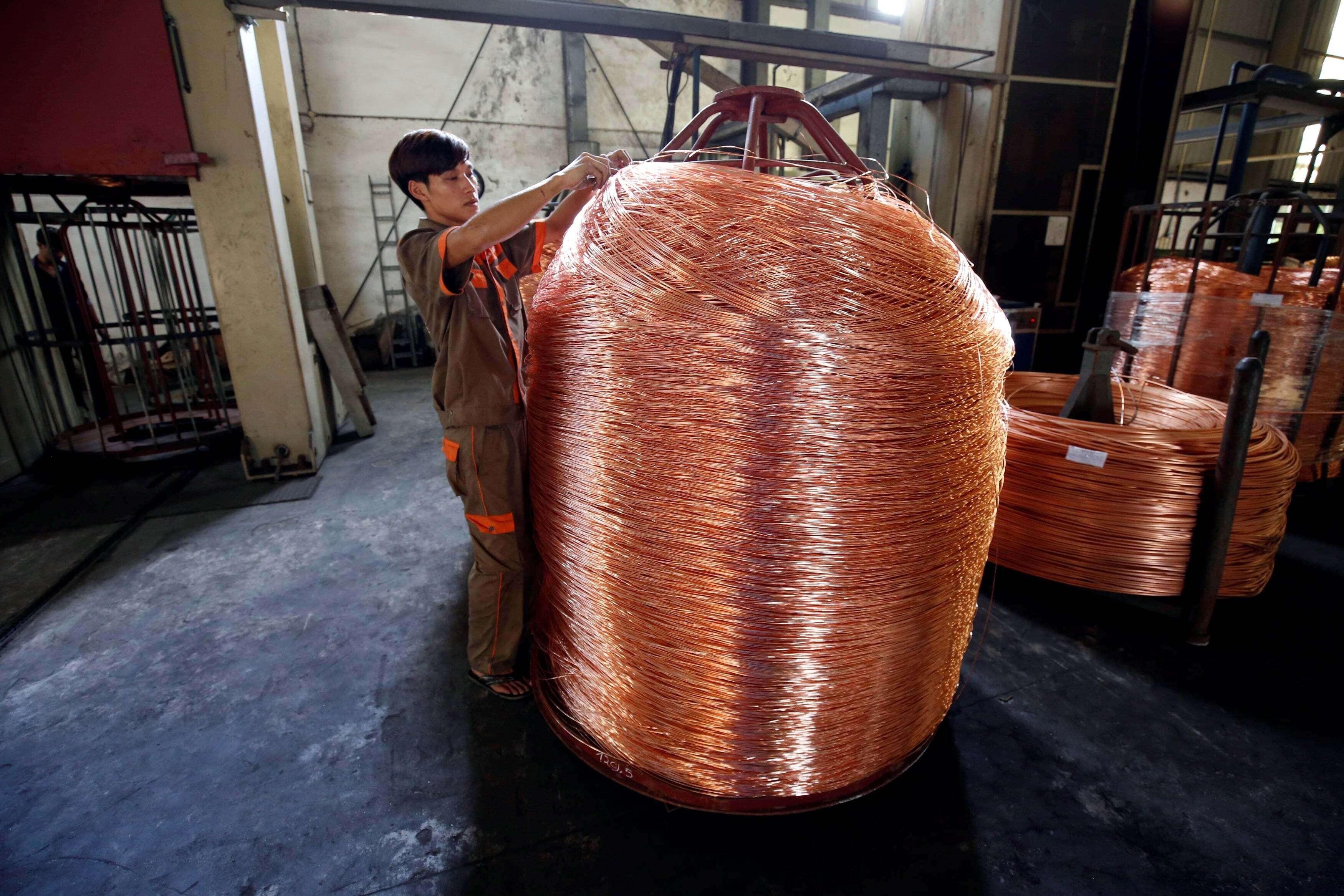Here's why it's time to ditch our obsession with trade deficits

They're a distraction that could cost jobs and growth.
Image: Enrapture Media
Stay up to date:
Trade and Investment
The notion that trade surpluses are a measure of a country’s economic prowess dates back centuries. In 16th-century Europe, “mercantilists” from England to Venice sought to accumulate gold by promoting exports and discouraging imports. Their intellectual heirs today think trade surpluses boost national welfare, employment and economic growth, while deficits do the opposite.
The preoccupation with surpluses is based on dubious arithmetic: since one country’s exports are another’s imports, it is impossible for all countries to be net exporters. It also overlooks a more fundamental point about trade. The main benefit from trade is imports – foreigners sending the fruits of their labour for us to enjoy, allowing us to focus on what we do best. Working to produce exports is the price we pay to enjoy these benefits.
A better goal is to reduce the export effort needed to obtain a given quantity of imports. Economists call this “enhancing the terms of trade”. This makes intuitive sense in our own lives: you run a surplus with your employer in order to run deficits with your local grocery store, your daughter’s football league and your favourite restaurant. Now imagine if you could run those same deficits while spending only half as much time at the office.
Adam Smith recognized in 1776 that the true wealth of a nation was not the gold and silver in its coffers, but the productivity of its labour force. “Nothing can be more absurd than this whole doctrine of the balance of trade,” he wrote. Fast-forward to the present day, and his warning is once again going unheeded by policy-makers. Erecting protectionist barriers is unlikely to create jobs and prosperity, for two reasons.
First, current measures of trade on the basis of flows give a distorted view of bilateral trade balances, since they fail to account for components imported to make exported goods. Given the fragmentation of production across multi-country value chains, a far better gauge of a country’s trade performance is how much value it adds to inputs. Focusing exclusively on goods exacerbates the misperceptions since it excludes trade in services, which typically accounts for more than two-thirds of output in advanced economies.
Second, there is no straightforward relationship between a country’s trade balance and its economic health or labour-market dynamics. For example, US job creation since the 1990s has been fastest during periods when imports were growing rapidly. The trade balance narrowed dramatically in 2009 – mainly because GDP growth and job creation were plummeting due to the financial crisis, shrinking demand for imported goods and services. Germany has big trade surpluses rather than deficits, but manufacturing’s share of total employment there has been declining at more or less the same pace as in the US.

Third, a country’s trade surplus or deficit is shaped less by the content of its trade agreements – tariff levels, quotas, regulatory rules and so on – than by the balance between domestic saving and investment within its own economy. Take the European Union: the entire bloc has exactly the same trade policy. Yet its member states perform very differently.
The current account balance – a broad measure of trade in goods and services that also includes net flows of income from foreign investments – is fundamentally a function of national saving and investment. Countries that run deficits spend more on imports than they earn from exports and borrow from the rest of the world to make up the difference. Conversely, surplus economies earn more from exports than they pay for imports; they lend the difference abroad, accumulating claims on foreigners in the process.
The only way to shift the current account balance is to alter savings and investment behaviour by households, firms and governments. Trade protectionism is an indirect way to accomplish this – but it could well miss the target or even backfire. For instance, when a country taxes steel imports, it hurts the export competitiveness of domestic makers of cars, planes, and anything else containing the metal.
Cross-country evidence suggests no clear link between tariff protection and current account balances. If anything, higher-tariff countries tend to have larger trade deficits. The World Trade Organisation rulebook authorizes countries to take protective action against import surges or predatory pricing, but while such measures can fight unfair trade, they have little effect on overall trade deficits.
Trying to tackle trade deficits bilaterally won’t work. Balancing trade with individual countries would, in practice, require constant interference with the purchase and sales decisions of thousands of companies and households, raising prices and generating distortions. Imagine if your supermarket had to buy something from you before it could sell you food.
None of this means policy-makers should ignore the existence of large trade surpluses and deficits. The cross-border financial flows these macro-economic imbalances entail are vulnerable to sudden stops that can destabilize countries and the global economy, as many Asian countries learned in 1997, followed by the Eurozone a decade later. But the solution is not trade restrictions: it lies in international cooperation to get countries that over-save to encourage more spending, and countries with big deficits to tighten their belts when circumstances allow it. The group of 20 leading nations is the logical forum in which to do just that. Similarly, broad negotiations among a number of countries are the most effective way to address unsatisfactory trade rules and industrial overcapacity.
Popular discontent over trade springs from genuine problems. Market-opening agreements have amplified technological trends that deliver outsized gains to small numbers of individuals, firms and regions. Closing markets solves none of these, but would hurt voters’ purchasing power, destabilize businesses and weaken future productivity.
Governments need to develop policies and institutions that cushion the blow from changes brought by both competition and technology, constrain runaway inequality, and equip people and businesses of all sizes to share in the opportunities presented by the global economy. This is the real challenge in trade. Current-account balances are merely a distraction – albeit one that could prove costly indeed.
Accept our marketing cookies to access this content.
These cookies are currently disabled in your browser.
Don't miss any update on this topic
Create a free account and access your personalized content collection with our latest publications and analyses.
License and Republishing
World Economic Forum articles may be republished in accordance with the Creative Commons Attribution-NonCommercial-NoDerivatives 4.0 International Public License, and in accordance with our Terms of Use.
The views expressed in this article are those of the author alone and not the World Economic Forum.
Forum Stories newsletter
Bringing you weekly curated insights and analysis on the global issues that matter.
More on Trade and InvestmentSee all
Madeleine North
August 6, 2025
JJ Enoch
August 6, 2025
Spencer Feingold
July 30, 2025
Charlotte Edmond
July 30, 2025
John Letzing
July 24, 2025
Anthony Cano Moncada
July 23, 2025







